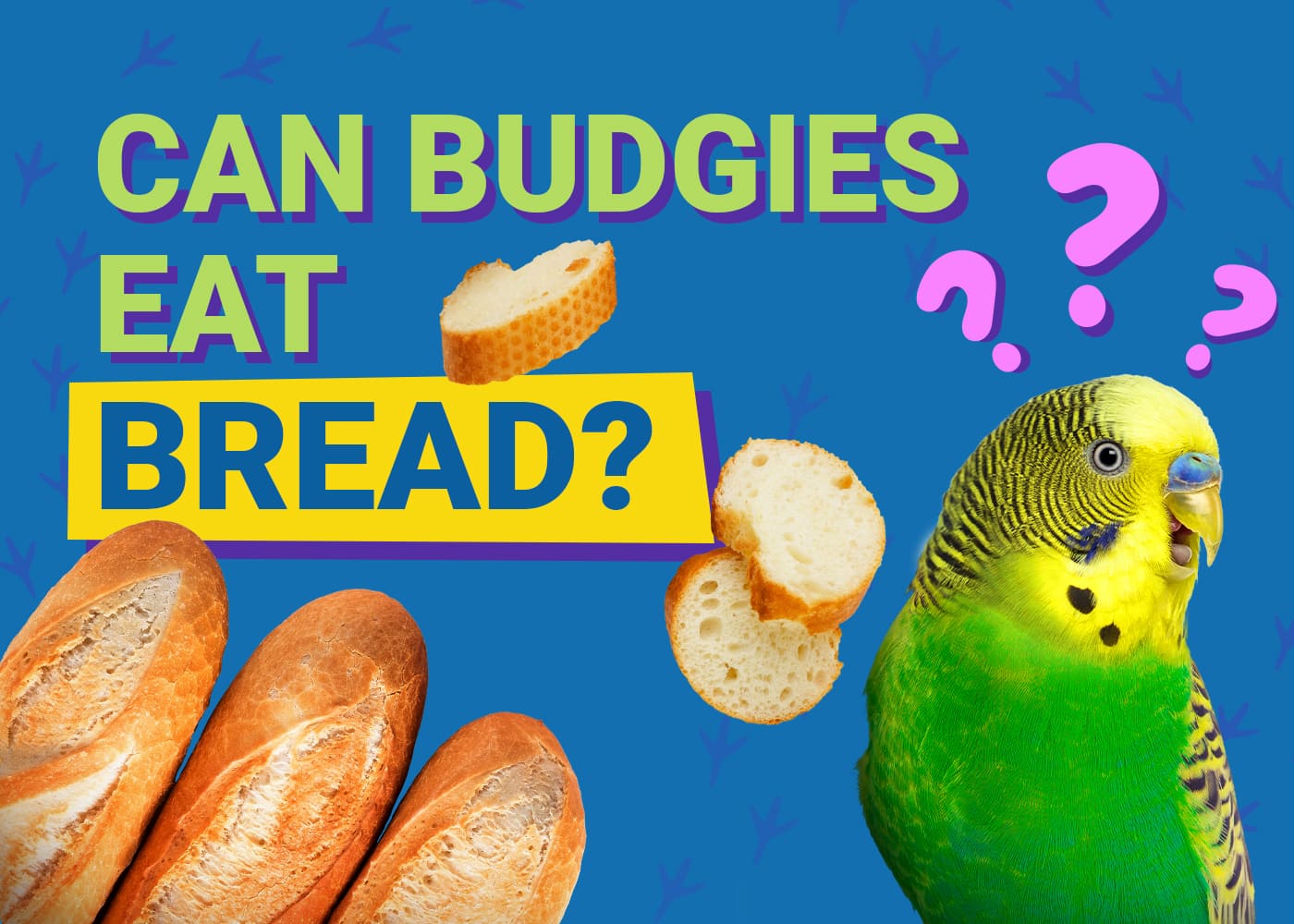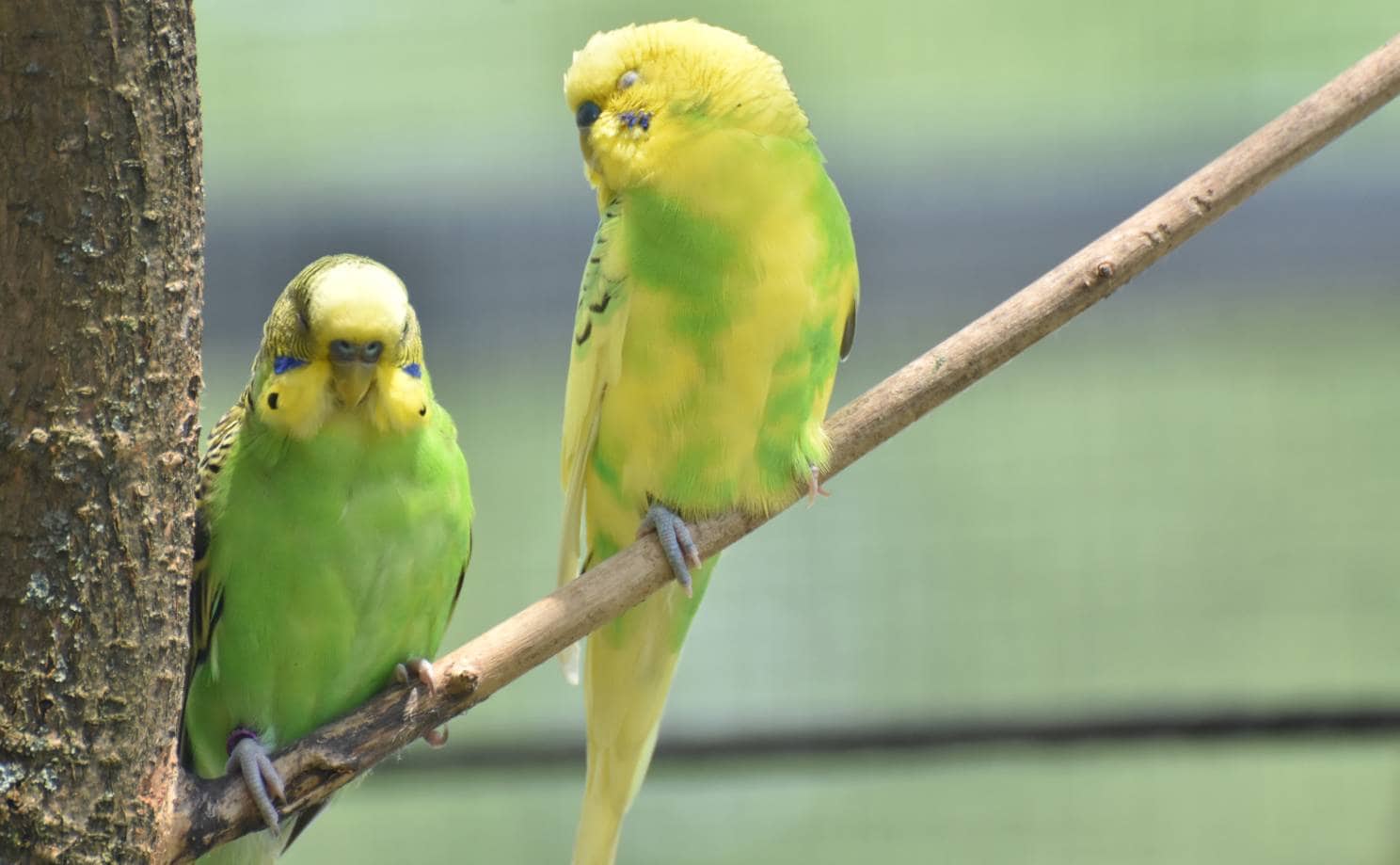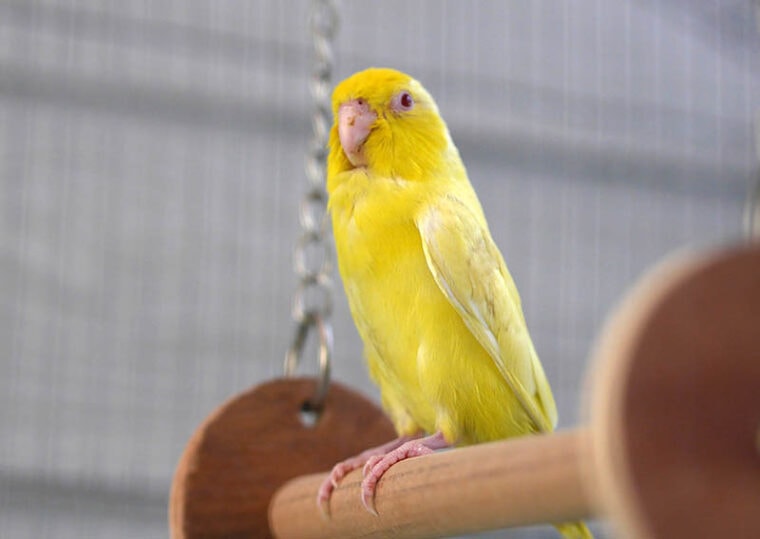
Click to Skip Ahead
Disclaimer: This article has been reviewed for accuracy by a qualified veterinarian. It should not be considered a complete care guide, nor is it intended to replace veterinary advice tailored to your specific pet. Bird owners are urged to consult with their veterinarian about their pet’s health and care.
Parrotlets are related to the larger green Amazon parrot. These parrots may be smaller than their larger parrot cousins, but they make up for their smaller size with big personalities. Also called the “pocket parrot,” these little birds are intelligent and can talk but with a squeaky robot-sounding voice. They are vocal and active birds who make excellent pets. If you’re considering adding a parrotlet to your family, read on to learn the specifics about these fascinating little birds to see if adding one to your family is right for you.
Since there are several species of parrotlets, this article will focus on the Pacific parrotlet (Forpus coelestis). Please note that some species of parrot are endangered, and protected by law. As a responsible bird owner, you should ensure that your parrot is from an ethical breeder and has all the necessary documentation your state requires by law.
Parrotlet Average Lifespan
The average lifespan of the Pacific parrotlet is 15 to 20 years; however, they can live up to 25 years as pets with proper care. It’s important to know their longevity before adding one to your family to ensure you’re in it for the long haul, as most will live an above average lifespan for a pet.
These little birds are fun to own, but in order to keep them healthy, you must learn how to care for one properly to ensure your parrotlet lives a long and happy life. Fortunately, since you’re here, we’ll cover such topics so you know how to care for one of these inquisitive, talkative, and beautiful little birds.

How Long Do Parrotlets Live in the Wild?
In the wild, exactly how long they can live is not well documented, as a few factors come into play regarding their longevity, such as predators or injuries. However, the Encyclopedia of Life lists Pacific parrotlets living around 10 in the wild1.
How to Care for Your Parrotlet for a Long Lifespan
Feeding & Diet
Feed high-quality pellet food mix appropriate for the species, with fresh veggies and a little fruit. Parrotlets love seeds due to their flavorful taste and fat content, but it’s best to avoid feeding too much of them because of their potential to cause obesity, which can lead to other health issues, such as arthritis and liver problems. Seeds are also deficient in a lot of essential nutrients- such as calcium and Vitamin A. However, they can eat a low-fat seed mix, including millet and barley.
Ideally, their diet should consist of 25% to 45% pellets, 15% to 20% low-fat seed mix (with the healthy seeds mentioned above), and 30% to 50% fresh veggies, legumes, grains, and fruits.
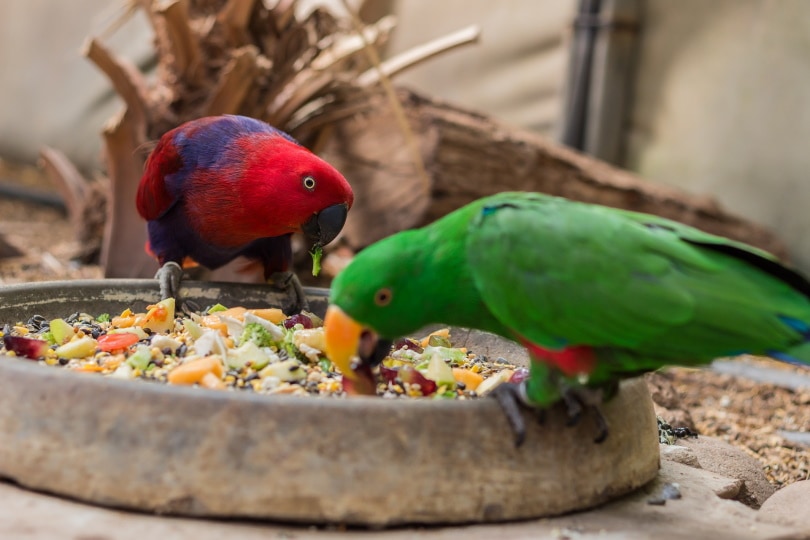
Environment
Parrotlets are active birds and require plenty of space for roaming and exercise. The cage should be big enough to house all toys and food and water bowls, preferably 18 x 18 inches in size for a single parrotlet. The bars should be narrow and spaced no more than ½-inch to prevent escapes, and place natural non-toxic wood perches for your bird to stand. Birds should be able to stretch to their full height and open their wings wide and still have room for flapping and moving around in their cage.
Keep the cage out of drafty areas and avoid placing the cage in direct sunlight. Place the cage in high-traffic areas so your bird can interact with everyone in the home, ideally in a quiet corner of a busy room. Keep in mind the presence of too much noise or dogs and cats can cause them stress. However, do not place the cage in the kitchen (or other such areas) to avoid your bird being exposed to possible toxic fumes.
Be sure to cover the cage at night for sound sleep; parrotlets should receive 12 hours of quiet time for sleep.
Care
Always provide clean, fresh drinking water 24/7. Parrotlets should also be misted every other day with fresh, clean water. Misting helps keep the skin and feathers healthy, much like in their native tropical climates. Allow your bird to dry in a sun-lit room or outdoors in the safety of a cage.
Prohibit access to ceiling fans, toxic plants, or pesticides (wash fresh food before feeding). Avoid toxic wood, and remember to provide your parrotlet with plenty of bird-safe toys, such as leather, wood, or rope toys for climbing.
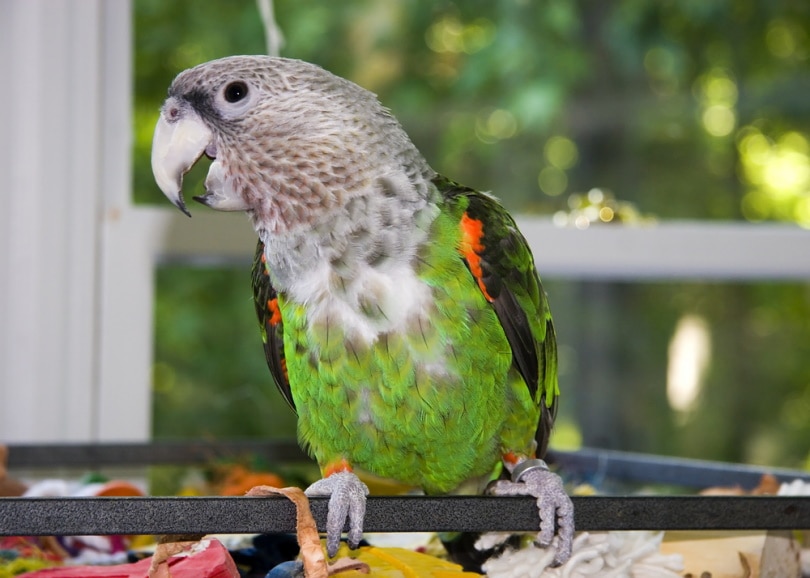
Cleaning
Discard uneaten food in the cage each day, as uneaten food will spoil. Feces should be wiped clean daily off perches, food and water dishes, and toys. You should also change the paper or lining on the bottom every day or every other day. The cage will need a deep cleaning once a week or so, which entails using a mild dish detergent and water.
Healthcare
It’s best to have your vet that specializes in birds examine your bird after bringing him or her home to ensure they are healthy. After that, an annual exam should suffice unless your bird gets ill.
The Life Stages of a Parrotlet
A parrotlet will go through five developmental stages before becoming an adult, which are as follows:
How to Tell Your Parrotlet’s Age
Determining the age of an adult Pacific parrotlet is more or less a guessing game, as there is really no way to determine the exact age. Most parrotlets will have their adult colors and feathers at 12 weeks of age. After that, it’s an educated guess.
However, you can tell the difference between males and females. Males will have blue feathers on their wings, whereas females will not. Males also have dark-blue primary wing feathers (outermost), with the secondary (innermost) turquoise. Females also have a yellow patch above their beaks and between the eyes.
Conclusion
Parrotlets make excellent family pets, especially for those who love the parrot species but desire a smaller bird without sacrificing personality. They are intelligent, active little birds requiring ample space for play and human interaction. They can talk, and the speech is almost robotic, which adds to their cuteness. They can also be taught a few tricks! The parrotlet is an excellent bird for beginners with enough commitment and time to spare. And with proper care, they can live long and healthy lives.
Featured Image Credit: Ear lew Boo, Shutterstock



